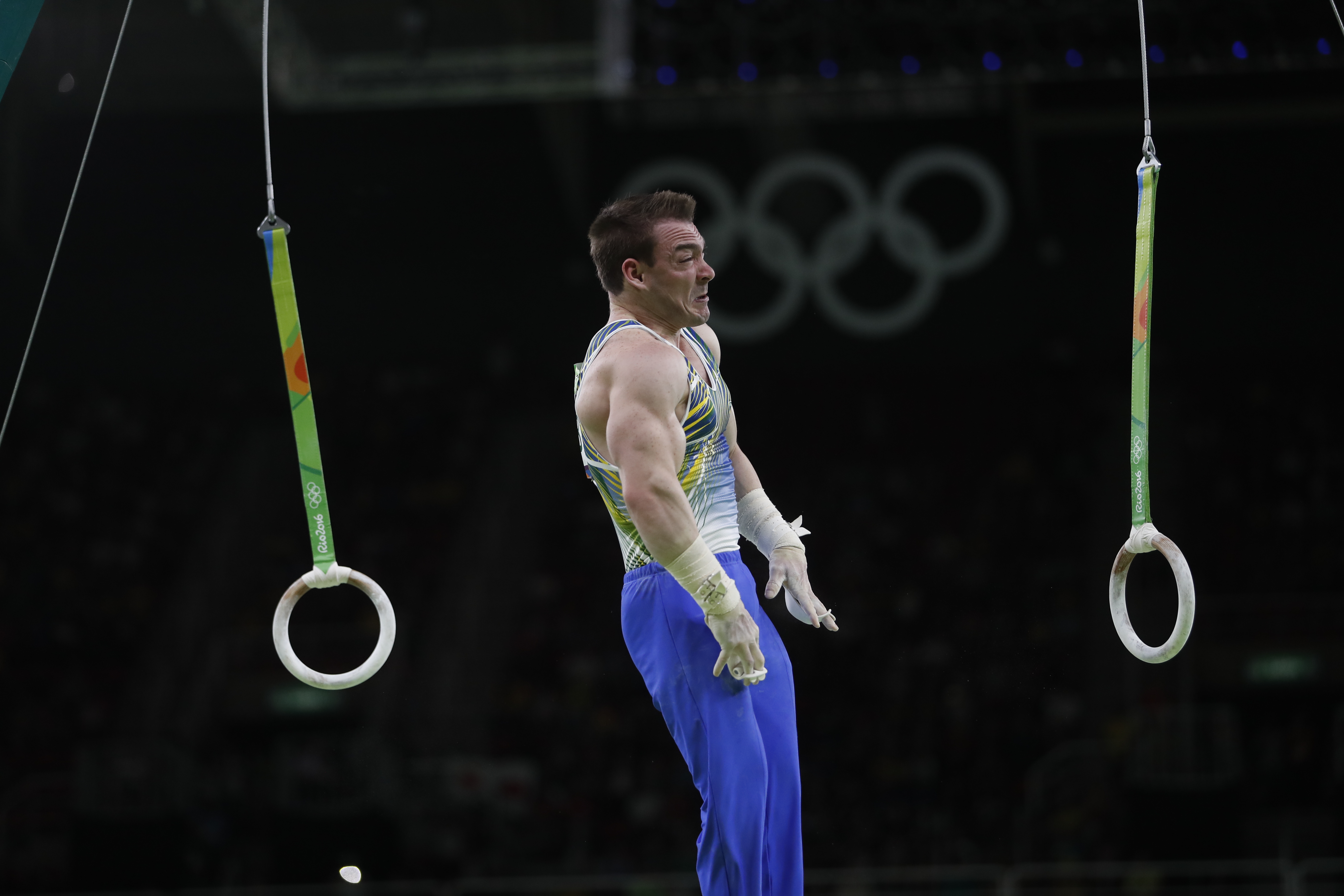Still Rings on:
[Wikipedia]
[Google]
[Amazon]

 The rings, also known as still rings (in contrast to
The rings, also known as still rings (in contrast to

 The rings, also known as still rings (in contrast to
The rings, also known as still rings (in contrast to flying rings
Flying rings was a gymnastics event similar to still rings, but with the performer gripping a pair of rings, approximately shoulder width apart, and swinging— from the point of suspension of the rings— while executing a series of stunts.
Ap ...
), is an artistic gymnastics
Artistic gymnastics is a discipline of gymnastics in which athletes perform short routines on different types of apparatus. The sport is governed by the Federation Internationale de Gymnastique, Fédération Internationale de Gymnastique (FIG), ...
apparatus and the event that uses it. It is traditionally used only by male
Male (Planet symbols, symbol: ♂) is the sex of an organism that produces the gamete (sex cell) known as sperm, which fuses with the larger female gamete, or Egg cell, ovum, in the process of fertilisation. A male organism cannot sexual repro ...
gymnasts due to its extreme upper body strength requirements. Gymnasts often wear ring grips while performing.
The apparatus
The apparatus consists of two rings that hang freely from a rigid metal frame. Each ring is supported by a strap, which connects to a steel cable suspended from the metal frame. The gymnast, who grips one ring with each hand, must control the movement of the rings and their body movements at all times.Dimensions
The measurements of the standard apparatus are specified byFédération internationale de gymnastique
The International Gymnastics Federation (French language, French: ''Fédération Internationale de Gymnastique'', abbr. FIG) is the body governing competition in all disciplines of gymnastics. Its headquarters is in Lausanne, Switzerland. It wa ...
(FIG) in its ''Apparatus Norms'' document:
* Inner diameter: ±
* Diameter of profile: ±
* Distance from the point of attachment to the lower inner side of the rings: ±
* Distance between two points of attachment: ±
Routines
An exercise on rings consists of swing, strength, and hold elements. Generally, gymnasts are required to fulfill various requirements, including a swing to hold handstand, a static strength hold, and an aerial dismount. More experienced gymnasts often perform more than one strength element, sometimes swinging into hold positions or performing different holds consecutively. One of the most widely recognized skills performed on the rings is the ''Iron Cross'', which is executed by extending both arms straight out from the sides of the body while suspended mid-air for at least two seconds. Other common strength moves include the inverted cross (i.e., vertically inverted Iron Cross) and the Maltese cross, in which the gymnast holds their body parallel to the ground at ring height with arms extended laterally. Swing elements include giant swings from handstand to handstand, in both front and back directions, similar to giants performed on the horizontal bar. Elements on the rings are regulated by the Code of Points.International level routines
A rings routine should contain at least one element from all element groups: * I. Kip and swing elements & swings through or to handstand * II. Strength elements and hold elements * III. Swings to strength hold elements * IV. DismountsScoring and rules
Gymnasts will take deductions for form similar to other apparatus. On rings, gymnasts will also take deductions for having bent arms while performing nearly all elements or using the straps/cables to support or balance themselves. Additional deductions are applied to gymnasts unable to maintain a neutral head position during holds, a neutral face (not grimacing), or grunting. There are also deductions for each extraneous swinging of the cables during the routine. Bonus points on the still rings are earned by performing consecutive distinct static hold elements based upon the letter value of both moves, listed in the code of points.See also
* List of gymnasts specializing in ringsReferences
{{DEFAULTSORT:Rings (Gymnastics) Artistic gymnastics apparatus